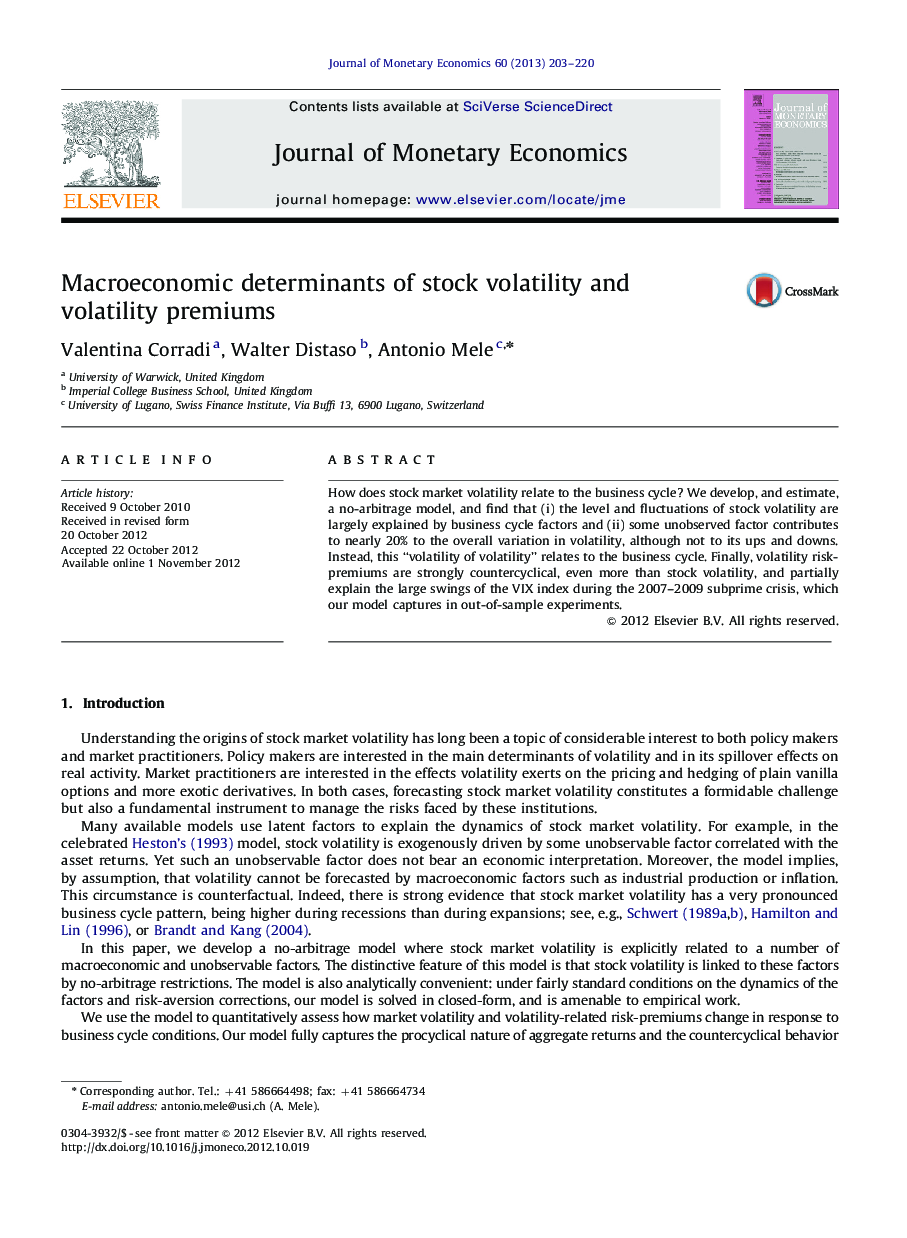| Article ID | Journal | Published Year | Pages | File Type |
|---|---|---|---|---|
| 967691 | Journal of Monetary Economics | 2013 | 18 Pages |
How does stock market volatility relate to the business cycle? We develop, and estimate, a no-arbitrage model, and find that (i) the level and fluctuations of stock volatility are largely explained by business cycle factors and (ii) some unobserved factor contributes to nearly 20% to the overall variation in volatility, although not to its ups and downs. Instead, this “volatility of volatility” relates to the business cycle. Finally, volatility risk-premiums are strongly countercyclical, even more than stock volatility, and partially explain the large swings of the VIX index during the 2007–2009 subprime crisis, which our model captures in out-of-sample experiments.
► The level of stock market volatility cannot be explained by macroeconomic factors only. ► However, macroeconomic factors are needed to explain the volatility of volatility. ► Volatility risk-premiums are strongly countercyclical, even more so than stock volatility. ► In our model macro factors and stock volatility are linked through no-arbitrage restrictions.
